This Dazzling Dozen post is inspired by Marlene Pilaete. Recently she did a 'La chambre obscure' post at La Collectionneuse on Atelier Schenker. This was one of the most famous German photo studios between the early 1910s and early 1930s. The two main photographers of the studio, Karl Schenker and Mario von Bucovich had many German film stars of the era for their cameras. The exhibition 'Master of Beauty' on the work of Karl Schenker can be seen at the Museum Ludwig in Cologne till 8 January 2017. And here at EFSP, 12 dazzling film star postcards with pictures by Atelier Schenker.
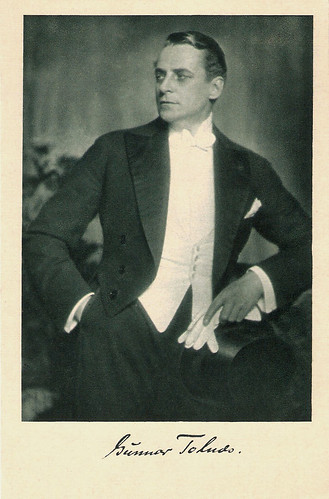
Gunnar Tolnaes. German postcard by Verlag W.J. Mörlins, Berlin / Vertrieb Ross-Verlag, Berlin, no. 9001/3. Photo: Karl Schenker.
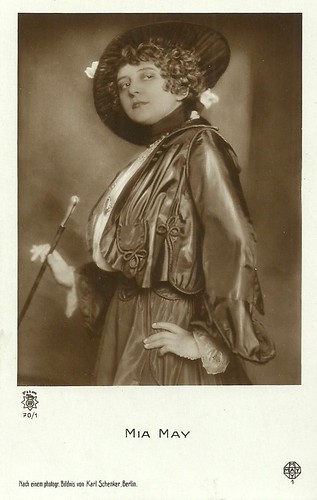
Mia May. German postcard by Rotophot in the Film Sterne series, no. 70/1. Photo: Karl Schenker, Berlin / May Film.
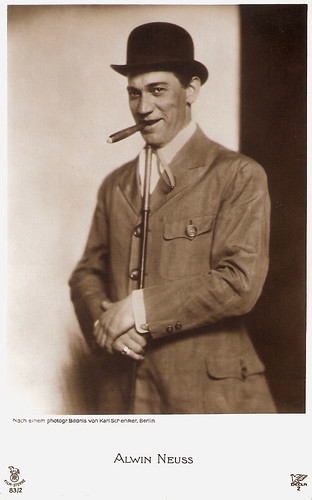
Alwin Neuss. German postcard by Rotophot in the Film Sterne series, no. 83/2. Photo: Karl Schenker, Berlin.
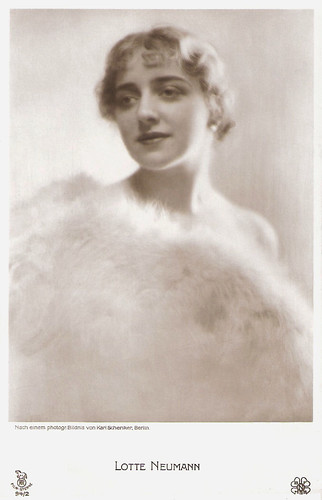
Lotte Neumann. German postcard by Rotophot in the Film Sterne series, no. 94/2. Photo: Karl Schenker / NBFMB.
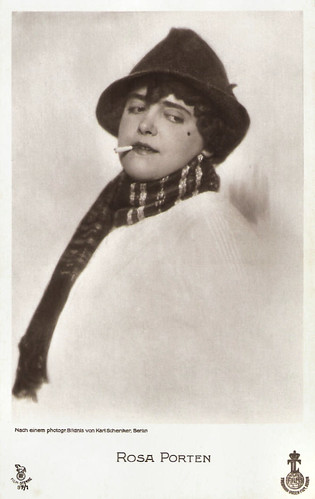
Rosa Porten. German postcard in the Film Sterne series by Rotophot, no. 97/1. Photo: Karl Schenker, Berlin / Treumann- Larsson Film, Berlin.

Alfred Abel is not listed as playing Voltaire in any of the Frederick the Great films, but the back of this postcard states this is for the Fridericus Rex series (1922-1923) by Arzén von Cserépy for his Cserepy Film Co.
German postcard by Ross Verlag, no. 647/9. Photo: Karl Schenker. Caption: Alfred Abel as 'Voltaire, the genial friend of Frederick [the Great]'.
Karl Schenker was born in Bukovina in Romania in 1886. He moved to Berlin via Lviv and Munich around 1912 and opened an 'atelier', a photo studio, in the German capital. Atelier Schenker quickly became a great success and everybody who was anybody had their portrait taken in his studio on the famous Kurfürstendamm. He also did fashion photography for magazines like Die Dame.
Curator Miriam Halwani of the Museum Ludwig: "After all, no one made their subjects look better, and there was no greater master of retouching. He wrapped actresses, dancers, and society ladies in tulle and furs before taking their picture—or he painted the fur into the picture afterwards."
In 1925, Schenker left for the US, where he stayed for five years. In New York, he mainly illustrated and painted portraits under the name Karol Schenker. His atelier in Berlin was then taken over by Mario von Bucovich. Von Bucovich was born in 1884 in Pula in Istria.
Schenker returned to Berlin in 1930, but when the Nazis took the power in 1933 the Jewish Schenker could not stay in Berlin. He emigrated to England in 1938. There he opened a studio in London on Regent Street and he died in the British capital in 1954.
Mario von Bucovich worked during the 1930s in Wiesbaden, London, Paris, and the US, before settling at the end of the decade in Mexico. There he died in a car accident in 1947.
The Museum Ludwig recently acquired around 100 portraits and took this as an occasion to trace Schenker’s life and work for the first time and to rediscover an unjustly forgotten artist. Around 250 works are presented in Cologne, including international loans: photographic portraits of once-famous women and men, fashion and wax figure photographs, magazine covers designed by Schenker, an original drawing, a painting, and yes, even film star postcards.
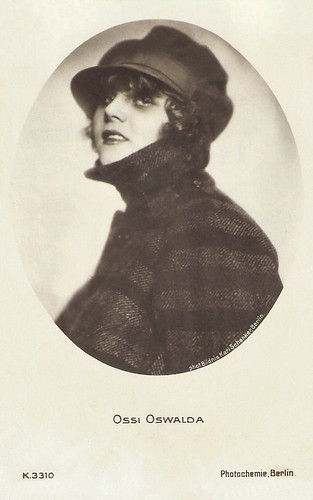
Ossi Oswalda. German postcard by Photochemie, Berlin, no. K. 3310. Photo: Karl Schenker, Berlin.
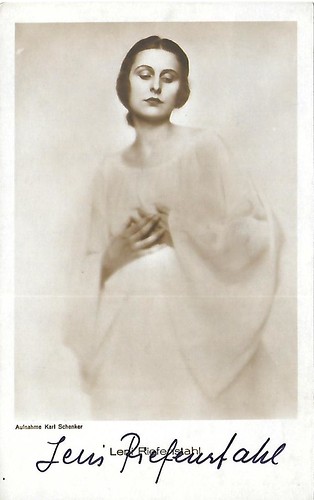
Leni Riefenstahl. German postcard. Photo: Karl Schenker. Collection: Didier Hanson.
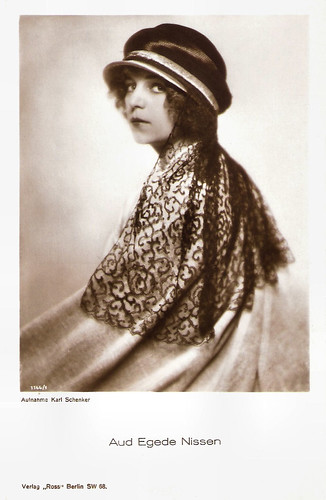
Aud Egede Nissen. German postcard by Ross Verlag, no. 1144/1, 1927-1928. Photo: Karl Schenker, Berlin.
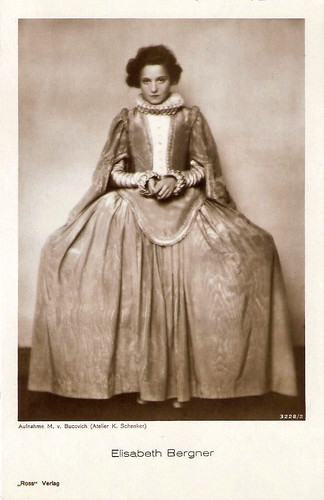
Elisabeth Bergner. German postcard by Ross Verlag, no. 3228/2, 1928-1929. Photo: M. v. Bucovich (Atelier K. Schenker). Publicity still for Doña Juana (Paul Czinner, 1928).
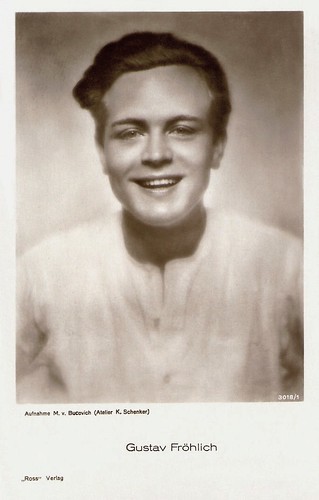
Gustav Fröhlich. German postcard by Ross Verlag, no. 3018/1, 1928-1929. Photo: M. v. Bucovich (Atelier K. Schenker).
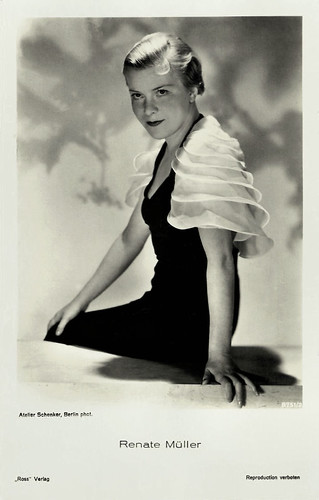
Renate Müller. German postcard by Ross Verlag, no. 8751/2, 1933-1934. Photo: Atelier Schenker, Berlin.
This is a post for Postcard Friendship Friday, hosted by Beth at The Best Hearts are Crunchy. You can visit her by clicking on the button below.

Sources: Marlene Pilaete (La Collectionneuse - French), Museum Ludwig and Wikipedia (French).

Gunnar Tolnaes. German postcard by Verlag W.J. Mörlins, Berlin / Vertrieb Ross-Verlag, Berlin, no. 9001/3. Photo: Karl Schenker.

Mia May. German postcard by Rotophot in the Film Sterne series, no. 70/1. Photo: Karl Schenker, Berlin / May Film.

Alwin Neuss. German postcard by Rotophot in the Film Sterne series, no. 83/2. Photo: Karl Schenker, Berlin.

Lotte Neumann. German postcard by Rotophot in the Film Sterne series, no. 94/2. Photo: Karl Schenker / NBFMB.

Rosa Porten. German postcard in the Film Sterne series by Rotophot, no. 97/1. Photo: Karl Schenker, Berlin / Treumann- Larsson Film, Berlin.

Alfred Abel is not listed as playing Voltaire in any of the Frederick the Great films, but the back of this postcard states this is for the Fridericus Rex series (1922-1923) by Arzén von Cserépy for his Cserepy Film Co.
German postcard by Ross Verlag, no. 647/9. Photo: Karl Schenker. Caption: Alfred Abel as 'Voltaire, the genial friend of Frederick [the Great]'.
Who was Karl Schenker?
Karl Schenker was born in Bukovina in Romania in 1886. He moved to Berlin via Lviv and Munich around 1912 and opened an 'atelier', a photo studio, in the German capital. Atelier Schenker quickly became a great success and everybody who was anybody had their portrait taken in his studio on the famous Kurfürstendamm. He also did fashion photography for magazines like Die Dame.
Curator Miriam Halwani of the Museum Ludwig: "After all, no one made their subjects look better, and there was no greater master of retouching. He wrapped actresses, dancers, and society ladies in tulle and furs before taking their picture—or he painted the fur into the picture afterwards."
In 1925, Schenker left for the US, where he stayed for five years. In New York, he mainly illustrated and painted portraits under the name Karol Schenker. His atelier in Berlin was then taken over by Mario von Bucovich. Von Bucovich was born in 1884 in Pula in Istria.
Schenker returned to Berlin in 1930, but when the Nazis took the power in 1933 the Jewish Schenker could not stay in Berlin. He emigrated to England in 1938. There he opened a studio in London on Regent Street and he died in the British capital in 1954.
Mario von Bucovich worked during the 1930s in Wiesbaden, London, Paris, and the US, before settling at the end of the decade in Mexico. There he died in a car accident in 1947.
The Museum Ludwig recently acquired around 100 portraits and took this as an occasion to trace Schenker’s life and work for the first time and to rediscover an unjustly forgotten artist. Around 250 works are presented in Cologne, including international loans: photographic portraits of once-famous women and men, fashion and wax figure photographs, magazine covers designed by Schenker, an original drawing, a painting, and yes, even film star postcards.

Ossi Oswalda. German postcard by Photochemie, Berlin, no. K. 3310. Photo: Karl Schenker, Berlin.

Leni Riefenstahl. German postcard. Photo: Karl Schenker. Collection: Didier Hanson.

Aud Egede Nissen. German postcard by Ross Verlag, no. 1144/1, 1927-1928. Photo: Karl Schenker, Berlin.

Elisabeth Bergner. German postcard by Ross Verlag, no. 3228/2, 1928-1929. Photo: M. v. Bucovich (Atelier K. Schenker). Publicity still for Doña Juana (Paul Czinner, 1928).

Gustav Fröhlich. German postcard by Ross Verlag, no. 3018/1, 1928-1929. Photo: M. v. Bucovich (Atelier K. Schenker).

Renate Müller. German postcard by Ross Verlag, no. 8751/2, 1933-1934. Photo: Atelier Schenker, Berlin.
This is a post for Postcard Friendship Friday, hosted by Beth at The Best Hearts are Crunchy. You can visit her by clicking on the button below.

Sources: Marlene Pilaete (La Collectionneuse - French), Museum Ludwig and Wikipedia (French).
No comments:
Post a Comment